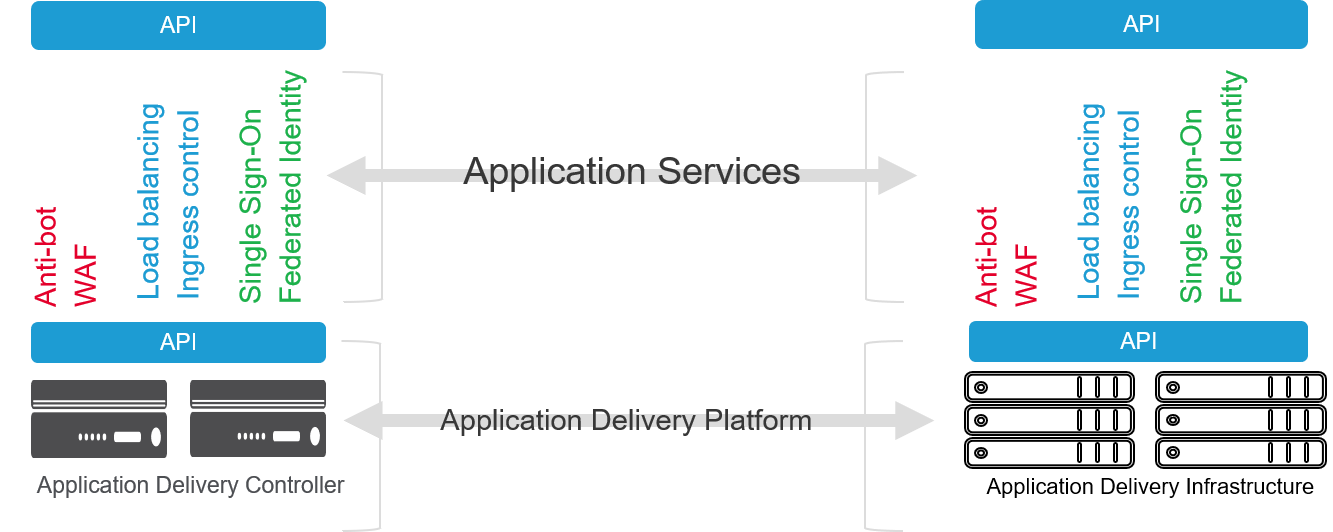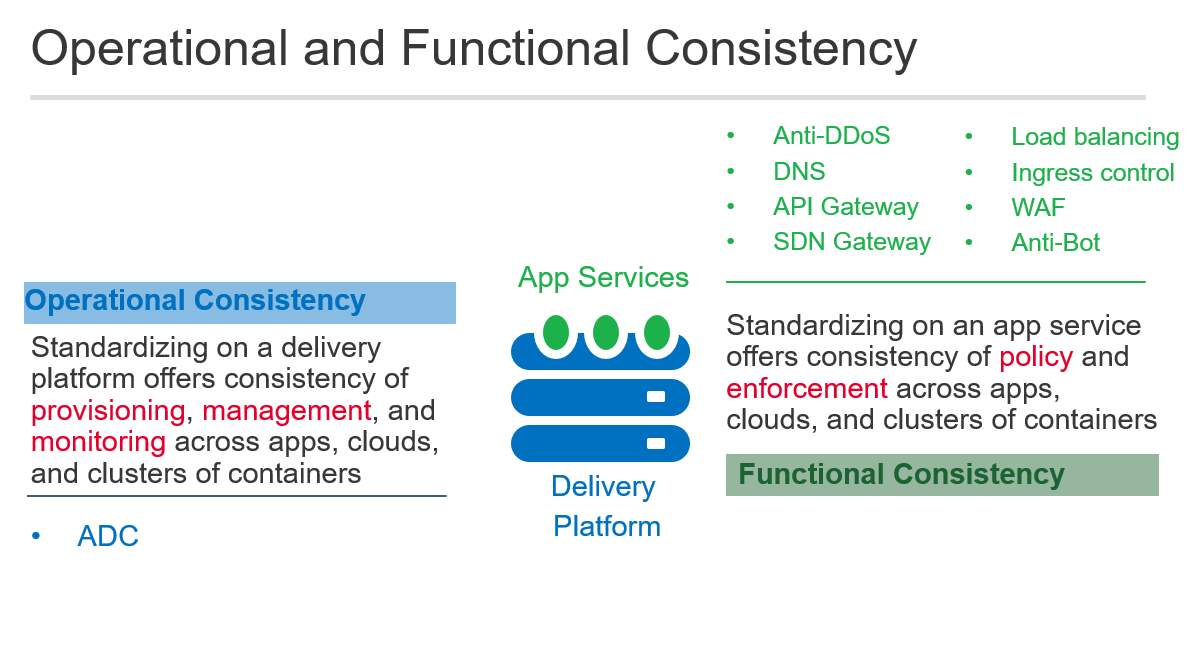La cohérence multi-cloud est multicouche
Cohérence. Dans le monde de la technologie, nous utilisons ce terme pour décrire la caractéristique d’équivalence. Quelque chose est cohérent si cela se comporte de la même manière au fil du temps ou dans des conditions variables. La cohérence reste problématique pour les entreprises opérant dans un monde multi-cloud. Selon notre rapport 2019 sur l'état des services d'application , c'est le cas de la plupart d'entre vous (87 %).
Certes, la variation des taux de déploiement entre les centres de données et le cloud pour les services d’application indique une cause simple : le manque de déploiement cohérent des services d’application.
Mais ce n’est pas la seule cause d’incohérence. Selon la même enquête, de nombreuses personnes déploient des services d'application sur site et dans le cloud public, mais rencontrent toujours des difficultés en matière de cohérence, notamment en matière de sécurité.
Cela exige une analyse plus approfondie de ce que signifie la « cohérence », car je soupçonne qu’une partie du problème réside dans l’incapacité à reconnaître qu’il existe deux niveaux différents de cohérence et que les deux sont importants.
Les services d'application ne sont pas des contrôleurs de distribution d'applications
Au cœur de cette discussion sur la cohérence se trouve la différence entre un contrôleur de distribution d’applications (ADC) et un service d’application.
L'ADC est une plateforme qui fournit des services applicatifs. Cet ADC est un système à part entière, de la même manière que Kubernetes est un système à part entière. Kubernetes est une plateforme de déploiement et d'exploitation de conteneurs. Un ADC est une plate-forme permettant de déployer et d'exploiter des services d'application.

C'est important, car les plateformes (ou les systèmes, si vous préférez) comportent une notion de cohérence différente de celle des « choses » qu'elles déploient et exploitent. La cohérence se situe au niveau opérationnel, c’est-à-dire au niveau de la gestion et de l’exploitation de la plateforme et des services applicatifs qu’elle fournit.
Cohérence fonctionnelle
Cela diffère nettement de la cohérence fonctionnelle, qui est offerte par chaque service d’application. La cohérence fonctionnelle comprend les capacités du service d’application. C'est généralement à cela que les gens font référence lorsqu'ils évoquent un problème de cohérence multicloud, car c'est le plus visible.
La cohérence fonctionnelle est particulièrement difficile à atteindre lors du déploiement de services d’application provenant de différents fournisseurs. Un service WAF ou anti-bot d’un fournisseur n’est pas nécessairement fonctionnellement équivalent à un service WAF ou anti-bot d’un autre fournisseur.
L’une des raisons pour lesquelles les organisations ont du mal à assurer la cohérence multicloud n’est pas qu’elles ne déploient pas de services d’application dans le cloud, mais plutôt qu’elles déploient différents services d’application avec des capacités fonctionnelles incohérentes. La normalisation basée sur l’équivalence fonctionnelle aidera les organisations à atteindre la cohérence qu’elles ont du mal à atteindre.

Cohérence opérationnelle
La seconde source d’incohérence, moins souvent évoquée, se trouve au niveau de la plateforme. Pour un grand nombre d’organisations, c’est l’ADC. En migrant vers le cloud public, beaucoup choisissent (volontairement ou non) des options cloud natives pour les services applicatifs.
Cela introduit immédiatement une incohérence opérationnelle au niveau de la plate-forme. La manière dont vous provisionnez, intégrez et exploitez ces services d’application est opérationnelle et introduit une dette opérationnelle dès que vous vous connectez à la première API.
Vous n’utilisez probablement pas de services d’application cloud natifs sur site. Ce qui signifie que vous devez désormais gérer deux plates-formes de services d’application différentes. Ils ont des méthodes de gestion, d'analyse, de surveillance, tout différentes.
C'est comme utiliser deux ADC différents sur site. Même si certaines très grandes organisations y parviennent, au fil des années, nous avons remarqué que la plupart des organisations se standardisent sur une seule plateforme ADC. La cohérence opérationnelle et la capacité à répliquer les politiques de service d’application sur toutes les applications ont été un facteur déterminant dans cette décision.
Mais lors de la migration vers le cloud, certains ont oublié pourquoi ils ont opté pour une plateforme ADC en premier lieu : la cohérence opérationnelle et le support. L’introduction de plateformes supplémentaires augmente nécessairement la charge opérationnelle et nuit à la quête de cohérence.
La cohérence nécessite une normalisation
La normalisation peut être un terme effrayant pour certains qui pensent qu’elle étouffe l’innovation. Mais ce qui est plus effrayant, c’est une situation où tout est permis, qui pourrait encourager l’innovation, mais qui, à long terme, n’est pas tenable et crée un environnement opérationnel chaotique.
Alors que l'informatique est sous pression pour apporter de la valeur à l'entreprise, l'augmentation du personnel opérationnel afin de maintenir plusieurs plates-formes et une ménagerie de services applicatifs semble contraire à l'objectif d'atteindre la cohérence multi-cloud.
La normalisation – en particulier au niveau opérationnel – est un élément clé de l’innovation car elle allège la charge du personnel qui doit se concentrer sur les plateformes d’exploitation et encourage plutôt la collaboration sur les politiques et l’architecture.
En garantissant la cohérence opérationnelle et fonctionnelle entre les propriétés, les organisations peuvent atteindre la cohérence de politique qu'elles souhaitent sans dépasser leur budget.
